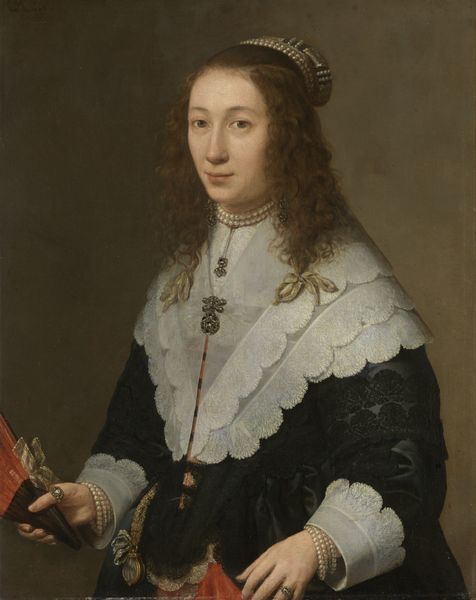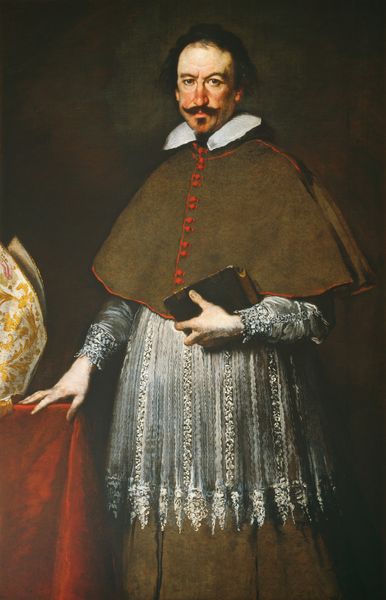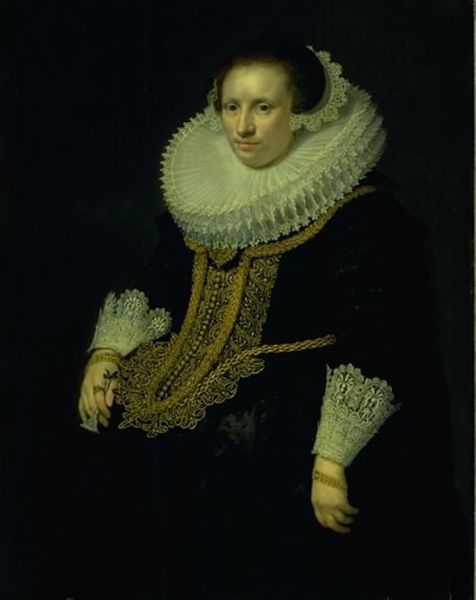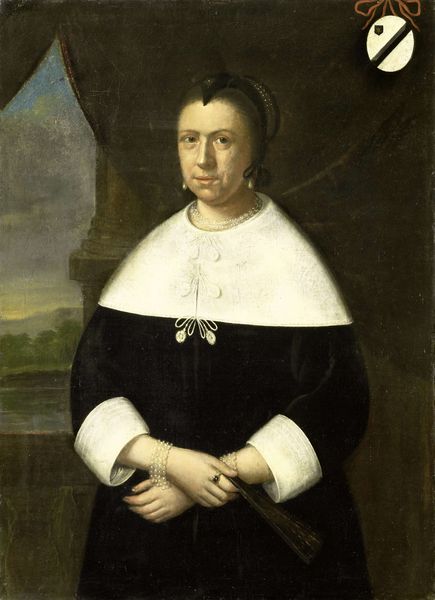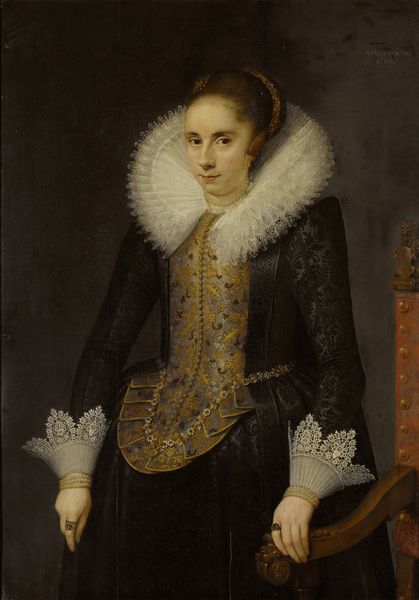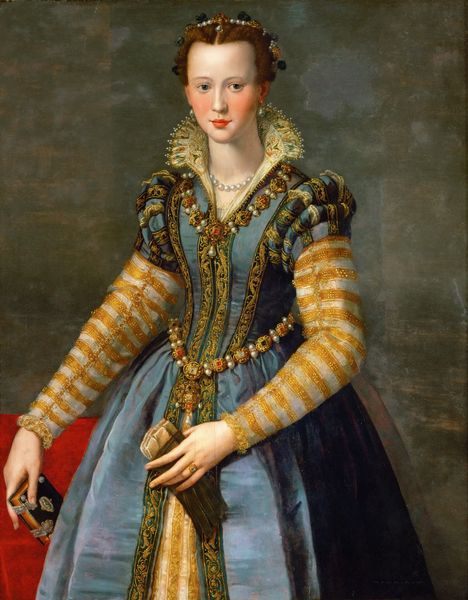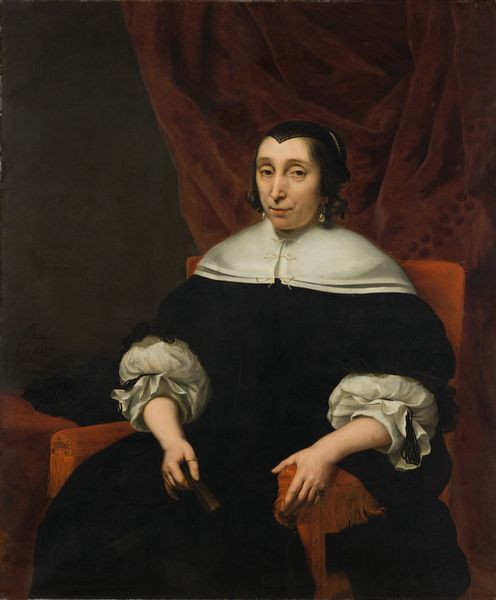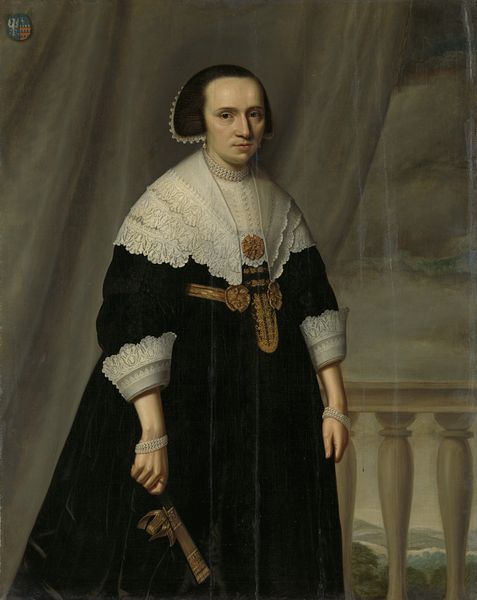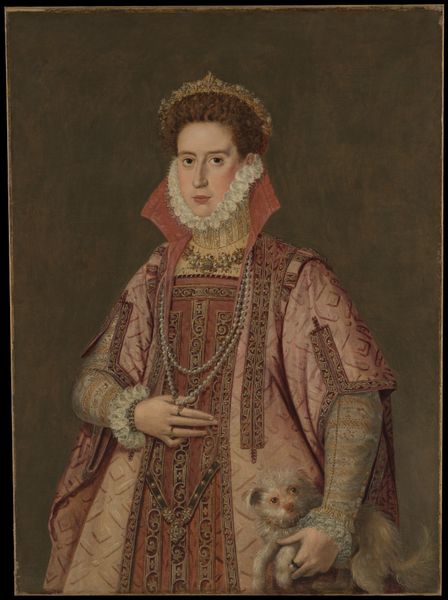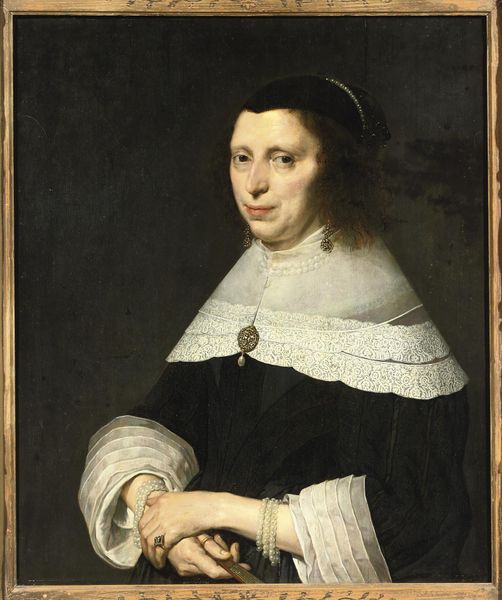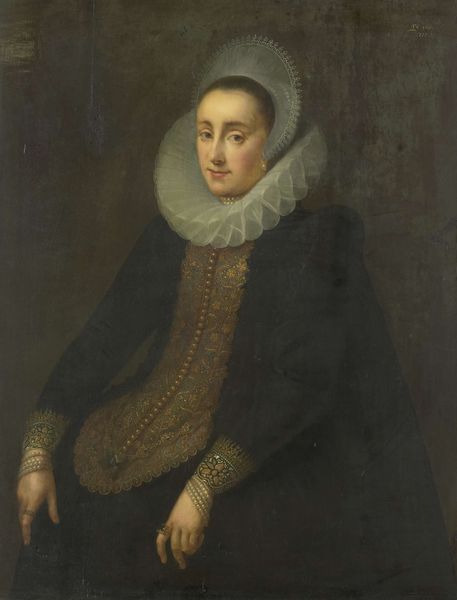
Portrait of Maria Salome von Stalburg (1602-1646), Wife of Johann Maximilian zum Jungen c. 1641
0:00
0:00
painting, oil-paint, canvas
#
portrait
#
woman
#
baroque
#
painting
#
oil-paint
#
portrait subject
#
figuration
#
canvas
#
portrait head and shoulder
#
history-painting
Dimensions: 105.5 x 86.5 cm
Copyright: Public Domain
Curator: Here we see Jeremias van Winghe's portrait of Maria Salome von Stalburg, painted around 1641. It's a stunning example of Baroque portraiture. Editor: Wow, she looks formidable! That serious expression and… enormous fur hat, give her such a powerful presence, like she knows exactly who she is and what she wants. It has a theatrical element. Curator: Indeed. Portraits of this era were often used to communicate status, family ties, and even political allegiances. Maria Salome was the wife of Johann Maximilian zum Jungen, and this portrait likely served to solidify their place in Frankfurt society. Look at the precise rendering of her lace collar, the gold chains and clasps – those details broadcast wealth and social standing. Editor: I’m especially drawn to her hands, posed as if interrupted mid-thought. One holds a small ornamental rod; what does it signify? It's as though she is actively engaging with the world, making decisions... not merely posing to be seen. There's a dynamic quality to her presence. Curator: That rod is quite fascinating. In a way, portraiture becomes about constructing an idea of power, in her gestures, how she holds this little scepter... In the Baroque period, everything had symbolism connected to religion and culture, every gesture and article of clothing were deliberately presented. This image had to resonate with certain people that can see the symbols of the portrait. Editor: So true. There's so much deliberate staging! But still, she feels...human. A real person beneath the pomp and circumstance. And perhaps also, because her mouth doesn't smile, so you sense that maybe she’s even… unhappy with that status, if one dares to wonder. The gaze isn’t overtly pleasant, you know? Curator: Her family may have seen the portrait to assert their noble lineage, while we're free to find something more in her enigmatic expression, aren't we? How history alters reception over time is rather beautiful in itself. Editor: Absolutely! It is the contrast between her finery and what seems to be her personal, almost melancholy depth, that has captured my attention. The portrait transcends its historical setting. I felt a kind of modern sensibility as if Maria Salome was saying ‘Paint my portrait, alright, but just so you know, I'm aware this pomp and frills are somewhat pointless.’ Curator: And now her likeness resides in our collection at the Städel Museum, a continued assertion of an individual's presence beyond their earthly lives, wouldn’t you agree? Editor: What an honour to get to spend a moment and try to decode an individual.
Comments
No comments
Be the first to comment and join the conversation on the ultimate creative platform.


